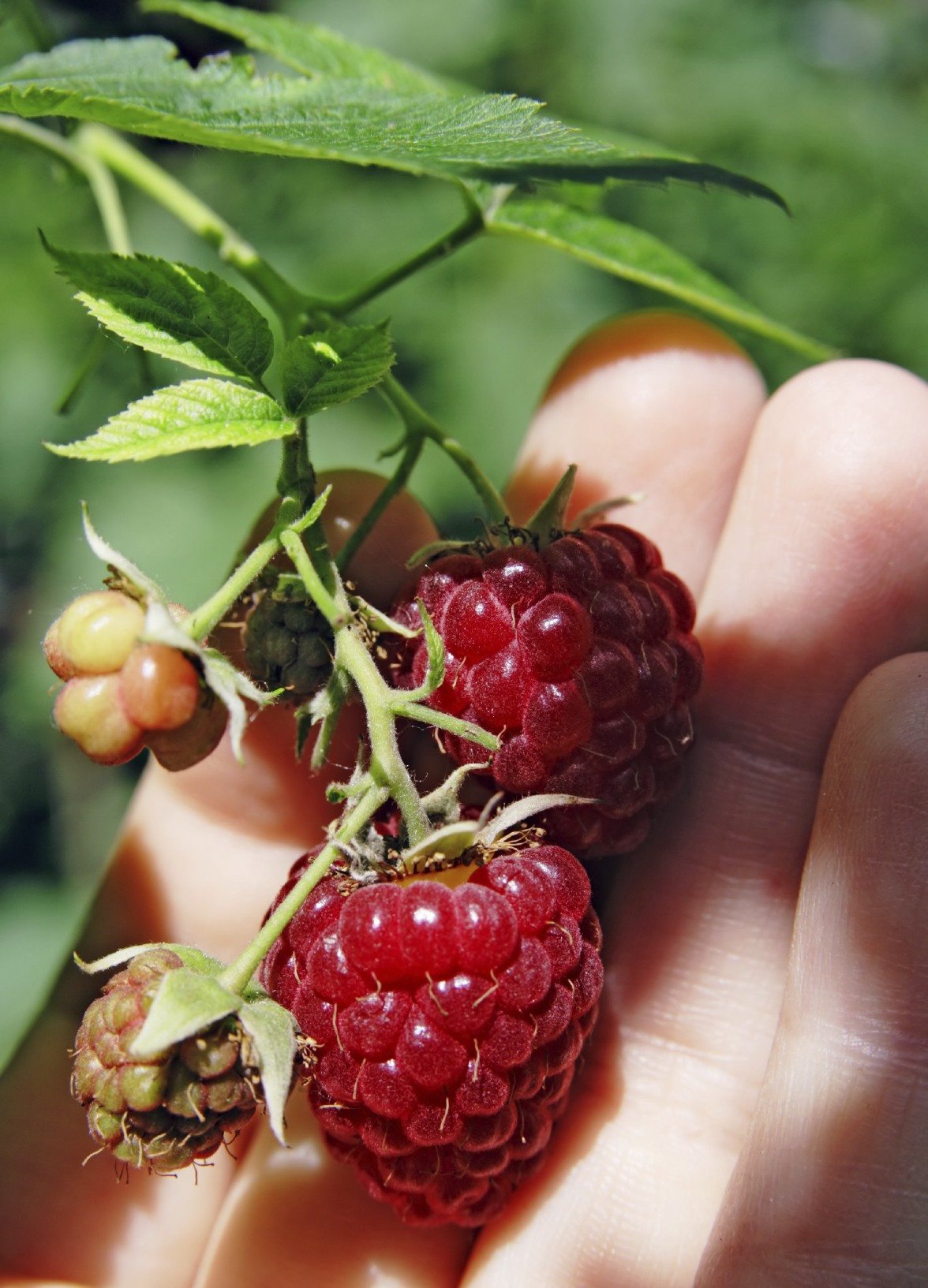Raspberry Picking Season – When Are Raspberries Ready To Pick

Raspberries can be expensive when bought at the supermarket due to their short shelf life and degree of difficulty when harvesting. Picking wild raspberries is a cost-effective and enjoyable way to get your fill of these luscious berries. How do you know when raspberries are ready to pick though? Keep reading to find out about raspberry picking season and how to harvest raspberries.
Harvesting Fresh Raspberries
Berries have always been good for us, but of late they are getting even more of a pat on the back due to the flavonoids (anthocyanins) that give raspberries their color. Additionally, they are a good source of vitamin C and fiber, and, although sweet, rank low on the glycemic index-- making them an excellent choice for those monitoring their blood sugar levels. All that aside, they are just plain delicious. Raspberries are called brambles and reside in the genus Rubus. They come in red, black, and purple. Okay, there are yellow ones as well, but they are just red raspberries that lack red pigment. Raspberries are suited to USDA zones 3 through 9 but certain cultivars do better in certain areas. Hardy varieties, such as Boyne, Nova, and Nordic, thrive in northern regions while Dorman Red, Bababerry, and Southland are more heat tolerant for those living in southern climates. Sure, raspberries are great when purchased at the grocers either “fresh” or frozen, but there is nothing as succulent as harvesting fresh raspberries fresh from the cane, slightly sun-warmed and dew-kissed at the peak of ripeness. How do you know when the raspberries are ready to pick though?
Raspberry Picking Season
When picking wild raspberries or those from your own garden, they need to be picked when completely ripe. Berries don’t ripen further once harvested. How can you tell if they are fully ripe? Size, color, and ease of removing from the cane are indicators, but the best way to find out if they are ready is by tasting them. Tragic, I know. Red raspberries may vary from light to dark red and purple from red to almost black. Some berries are slightly resistant to picking from the vine and others slip off easily. Once you’ve ascertained that you have enough ripe berries to pick, it’s time to dive in. They don’t get any better just hanging there off the brambles.
How to Harvest Raspberries
Pick berries as early in the morning as possible. If they are still drenched with dew or rain, let them dry prior to picking to lessen the chances of molding. Gently pluck them from the cane and place, don’t drop them, into a container. Use a shallow container so you don’t squash all the berries on the bottom with the weight of the harvest atop. Raspberries don’t ripen all at once but, instead, over a couple of weeks. So, when in doubt of a berry's readiness, leave it on the vine for a day or two to ensure it is fully ripe. When you are done picking for the day, if you haven’t eaten them all while picking that is, put them in the refrigerator. Don’t wash them until just before you are ready to eat them since the moisture makes the berries degrade rapidly. Don’t store the berries for more than a few days. Chances are good that isn’t a viable threat since it’s almost impossible to stay out of fresh berries.
Sign up for the Gardening Know How newsletter today and receive a free copy of our e-book "How to Grow Delicious Tomatoes".

Amy Grant has been gardening for 30 years and writing for 15. A professional chef and caterer, Amy's area of expertise is culinary gardening.
